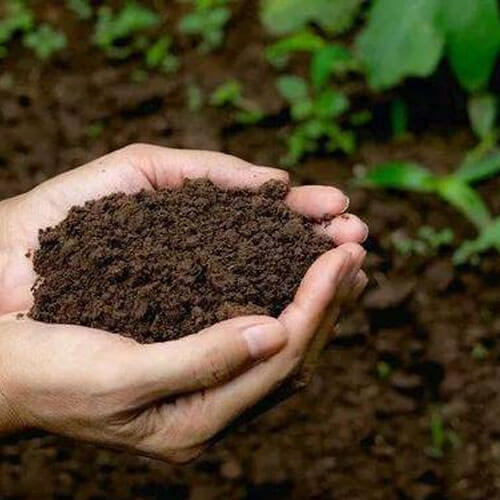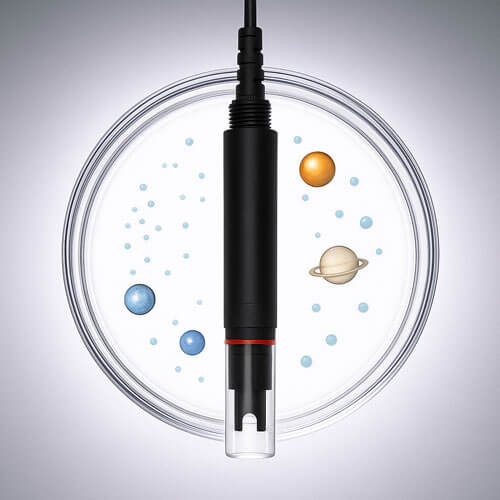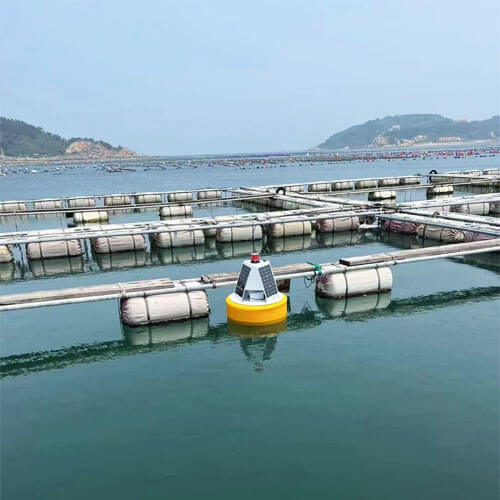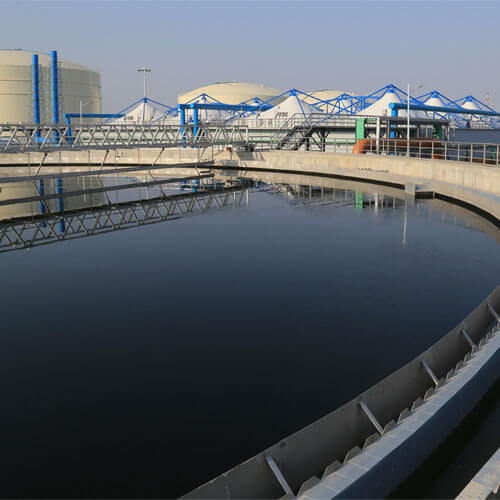Composition of soil
The composition of soil can be categorized into three phases: solid, liquid, and gaseous.
Solid phase
Mineral particles: This is the primary component of soil. Mineral particles vary widely in size, shape, and composition. Based on particle size, they are generally classified into sand, silt, and clay. Sand particles are relatively large and coarse in texture, offering good aeration and water permeability but poor water and nutrient retention. Silt particles are moderate in size and exhibit intermediate properties between sand and clay. Clay particles are extremely fine, with a large specific surface area, which allows them to adsorb significant amounts of ions and moisture. This gives clay soils strong water and nutrient retention capabilities but often poor aeration and drainage. The relative proportions of these particles determine the soil texture, which fundamentally influences the soil’s physical and chemical properties.
Organic matter: Organic matter in soil originates from a wide range of sources, including plant residues, animal excrement, and microbial remains. It plays a crucial role in promoting the formation of soil aggregates and improving soil porosity.
Liquid phase
Soil moisture: Soil moisture is a vital component of the soil system, serving as a crucial medium for material transport and chemical reactions. The content and form of soil moisture significantly influence the soil’s physical and chemical properties.
Soil solution: The soil solution is a complex mixture formed by various ions, molecules, and compounds dissolved in soil water. It contains essential nutrients required for plant growth, such as nitrogen, phosphorus, and potassium, as well as trace elements. The composition and concentration of the soil solution are affected by factors such as soil texture, soil pH, and fertilization practices.
Gaseous phase
Soil air: Soil air occupies the pore spaces within the soil and exchanges continuously with the atmosphere. Although its composition is similar to that of the atmosphere, the proportions differ. Typically, soil air contains less oxygen and more carbon dioxide compared to atmospheric air.
Pore structure: Soil pores are the spaces between mineral particles or soil aggregates, acting as channels for the storage and movement of air and water. The size, shape, and distribution of these pores play a crucial role in determining the soil’s aeration, water permeability, and water retention. Macropores mainly affect soil aeration and the infiltration of gravitational water, while micropores are critical for water retention and the movement of capillary water.
Know more about soil moisture
Soil moisture refers to the amount of water present in the soil, reflecting its degree of wetness or dryness. Soil moisture can be expressed in three main forms: gravimetric water content, volumetric water content, and relative water content.
Three types of soil moisture content
Gravimetric water content
This refers to the ratio of the weight of water in the soil to the weight of the dry soil, usually expressed as a percentage. The formula is:
gravimetric water content (%) = (wet soil weight – dry soil weight) / dry soil weight × 100%
This method is commonly used in laboratory measurements such as the oven-drying method. For example, if a soil sample weighs 120 grams when wet and 100 grams after drying, the gravimetric water content is: (120 – 100) / 100 × 100% = 20%.
Volumetric water content
This represents the volume of water per unit volume of soil and is also expressed as a percentage. It can be calculated by multiplying the gravimetric water content by the soil bulk density: volumetric water content (%) = gravimetric water content (%) × soil bulk density
For instance, if the gravimetric water content is 20% and the bulk density is 1.5 g/cm³, then: 20% × 1.5 = 30% volumetric water content.
Relative water content
This is the ratio of the actual soil water content to the field capacity (the maximum water content the soil can retain under natural drainage conditions), expressed as a percentage. Relative water content (%) = (actual water content / field capacity) × 100%
This metric better reflects the availability of water to plants. When relative water content is between 60% and 80%, the soil is considered suitable for crop growth. For example, if the actual soil water content is 25% and the field capacity is 40%, then: 25% / 40% × 100% = 62.5% relative water content.
Calculation of soil moisture
Gravimetric water content, also known as mass water content, refers to the ratio of the weight of water in the soil to the weight of the dry soil, typically expressed as a percentage. The calculation formula is:
For example, if a certain amount of wet soil is taken and, after drying, the weight of the dry soil is 100 grams, and the weight of the water lost during the drying process is 20 grams, then the gravimetric water content of the soil is: 20/100×100%=20%
Volumetric water content refers to the ratio of the volume of water in the soil to the total volume of the soil, typically expressed as a percentage. The calculation formula is:
For example: if the total volume of a soil sample is 100 cubic centimeters, and the volume of water it contains is 30 cubic centimeters, then the volumetric water content of the soil is: 30 / 100 × 100% = 30%.
The two can be converted using the soil bulk density. The conversion formula is:
What is soil bulk density?
Soil bulk density refers to the dry weight of soil per unit volume, including both the soil particles and the pore spaces within the natural, undisturbed structure of the soil. It is typically expressed in grams per cubic centimeter (g/cm³). Calculation formula:
Soil bulk density is influenced by factors such as soil texture, structure, porosity, and organic matter content, as well as external factors like land use practices, tillage measures, and soil moisture content.
Soil texture: Generally, sandy soils have larger particles and higher porosity, with loosely arranged particles, resulting in a higher bulk density—typically ranging from 1.4 to 1.7 g/cm³. Clay soils have finer particles, larger specific surface area, and more but smaller pores, leading to tightly packed particles and lower bulk density—usually between 1.1 and 1.4 g/cm³. Loam soils have intermediate particle sizes and bulk densities ranging from 1.3 to 1.5 g/cm³.
Soil structure: Good soil structure, such as granular structure, features a reasonable distribution of pore sizes and a balanced ratio between aeration pores and capillary pores, maintaining a loose soil state and resulting in lower bulk density. Poor structures like blocky or platy structures often exhibit uneven pore distribution, with either too many large or too many small pores, leading to soil compaction or excessive looseness, and may cause bulk density to be abnormally high or low.
Soil porosity: There is a negative correlation between porosity and bulk density. Higher porosity indicates a greater proportion of air and water in the soil and a smaller proportion of solid particles, resulting in lower bulk density. Conversely, lower porosity leads to higher bulk density.
Organic matter content: Organic matter is characterized by a loose and porous structure, which improves soil aggregation and increases porosity. Therefore, soils rich in organic matter tend to have lower bulk density. This is because organic matter binds soil particles into aggregates, enhancing looseness and reducing bulk density.
| Soil type | Bulk density (g/m^3) |
|---|---|
| Sandy soil | 1.4-1.7 |
| Loamy soil | 1.3-1.5 |
| Clay soil | 1.1-1.4 |
| Peat soil | <1 |
| Saline-alkali soil | 1.4-1.8 |
| Black soil | 1.0-1.2 |
| Red soil | 1.2-1.5 |
| Yellow soil | 1.1-1.4 |
| Brown soil | 1.1-1.3 |
| Chestnut soil | 1.2-1.5 |











